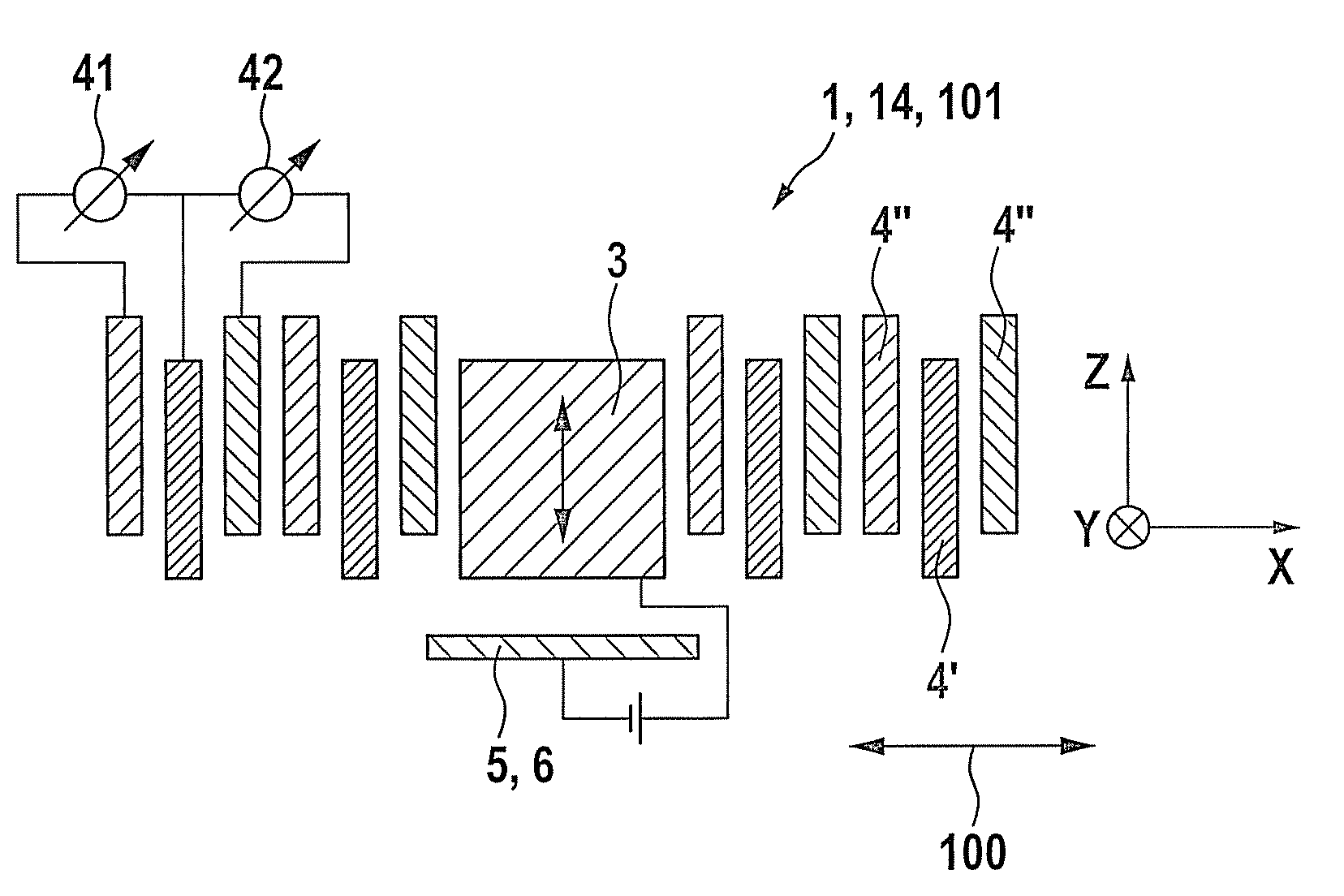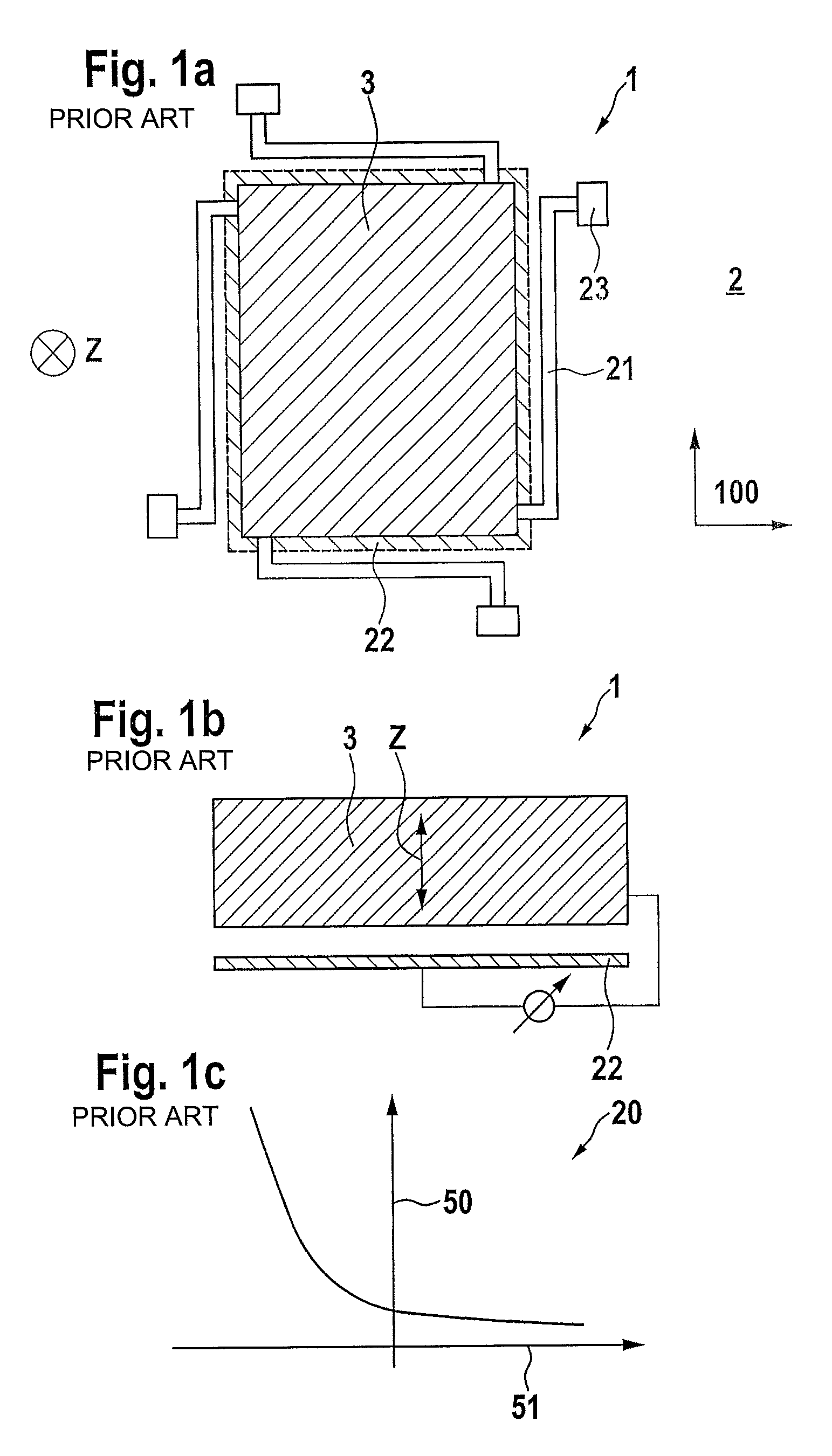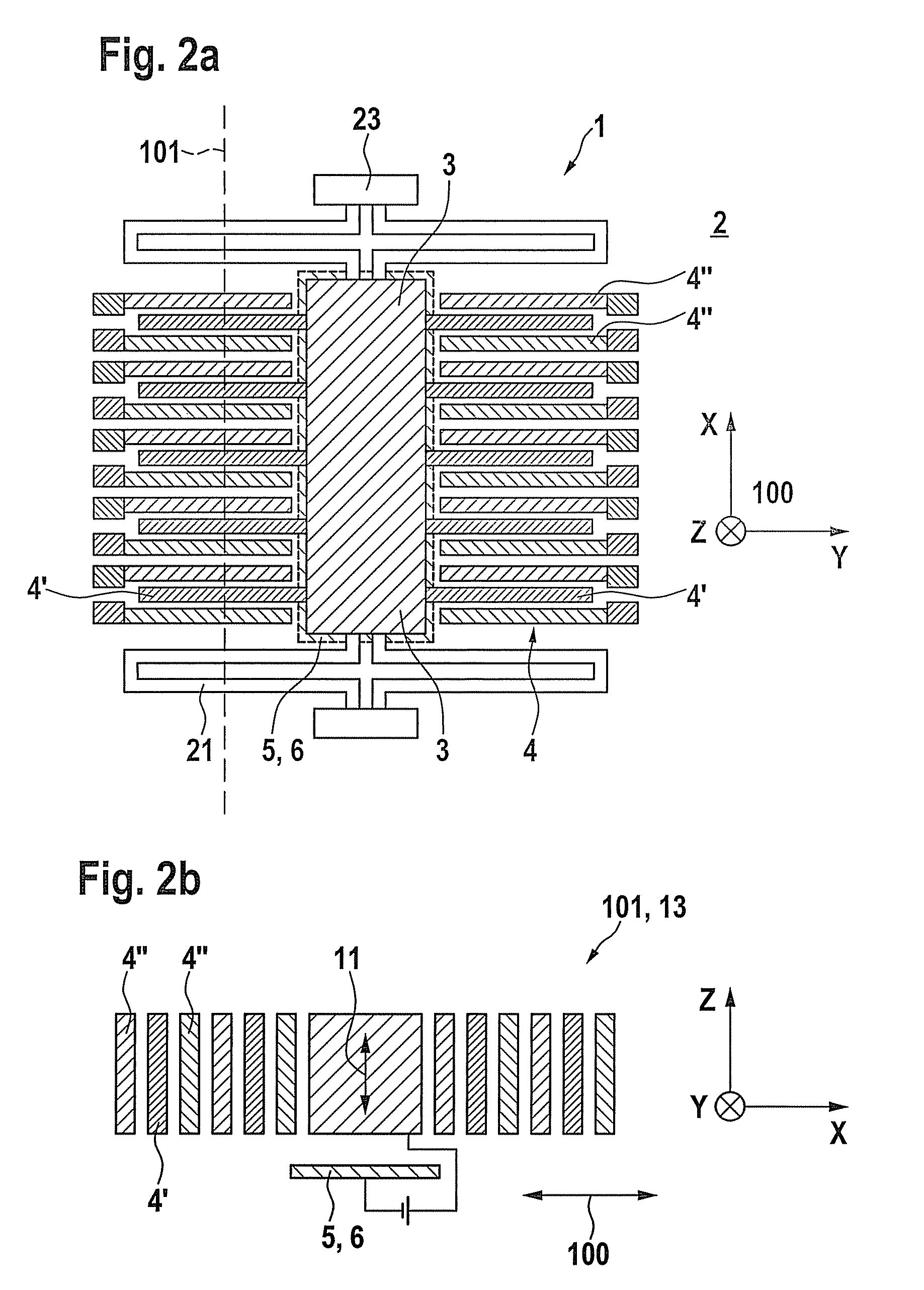Sensor element and method for operating a sensor element
a sensor element and sensor technology, applied in the direction of speed/acceleration/shock measurement, measurement devices, instruments, etc., can solve the problem that the excitation element cannot be provided between the seismic mass and the substrate, and achieve the reduction of wiring complexity, small installation space, and simplified evaluation of the second deflection.
- Summary
- Abstract
- Description
- Claims
- Application Information
AI Technical Summary
Benefits of technology
Problems solved by technology
Method used
Image
Examples
Embodiment Construction
[0016]FIGS. 1 a, 1 b and 1 c show schematic views of a sensor element 1 and a schematic capacitance curve 20 for a sensor element 1 according to the related art, sensor element 1 including a substrate 2 and a seismic mass 3 which is movable relative to substrate 2. Seismic mass 3 is attached to substrate 2 with the aid of four spiral springs 21 via anchoring elements 23 in such a way that an elastic second deflection of seismic mass 3 relative to substrate 2 along a third direction Z perpendicular to a main extension plane 100 of substrate 2 is made possible. A detecting electrode 22 is also situated between substrate 2 and seismic mass 3. Electrical voltage 24 between seismic mass 3 and detecting electrode 22 is dependent on the electrical capacitance between seismic mass 3 and detecting electrode 22, which in turn, is dependent on the distance between seismic mass 3 and detecting electrode 22 along third direction Z. The measurement of the electrical capacitance is thus a measure ...
PUM
 Login to View More
Login to View More Abstract
Description
Claims
Application Information
 Login to View More
Login to View More - R&D
- Intellectual Property
- Life Sciences
- Materials
- Tech Scout
- Unparalleled Data Quality
- Higher Quality Content
- 60% Fewer Hallucinations
Browse by: Latest US Patents, China's latest patents, Technical Efficacy Thesaurus, Application Domain, Technology Topic, Popular Technical Reports.
© 2025 PatSnap. All rights reserved.Legal|Privacy policy|Modern Slavery Act Transparency Statement|Sitemap|About US| Contact US: help@patsnap.com



